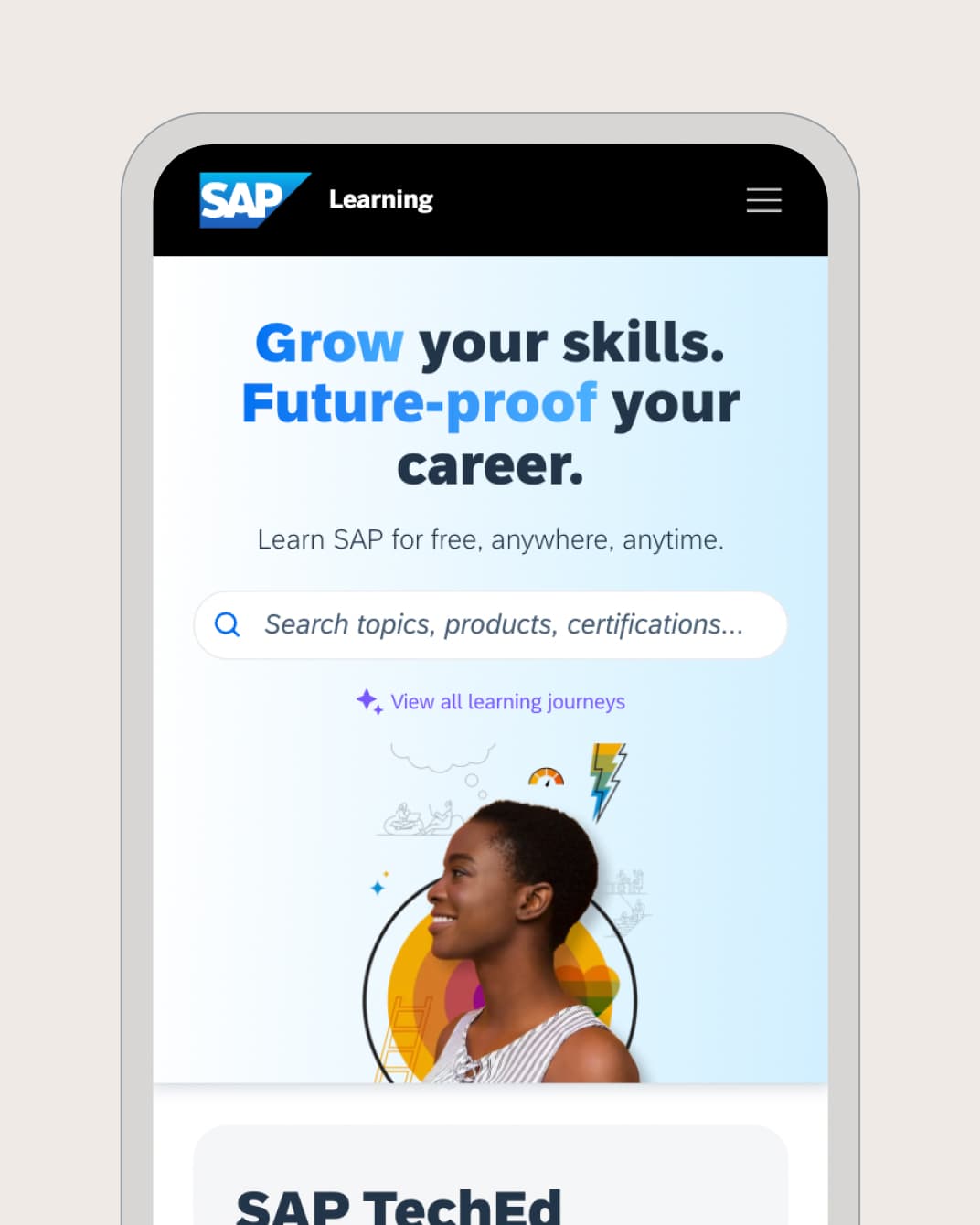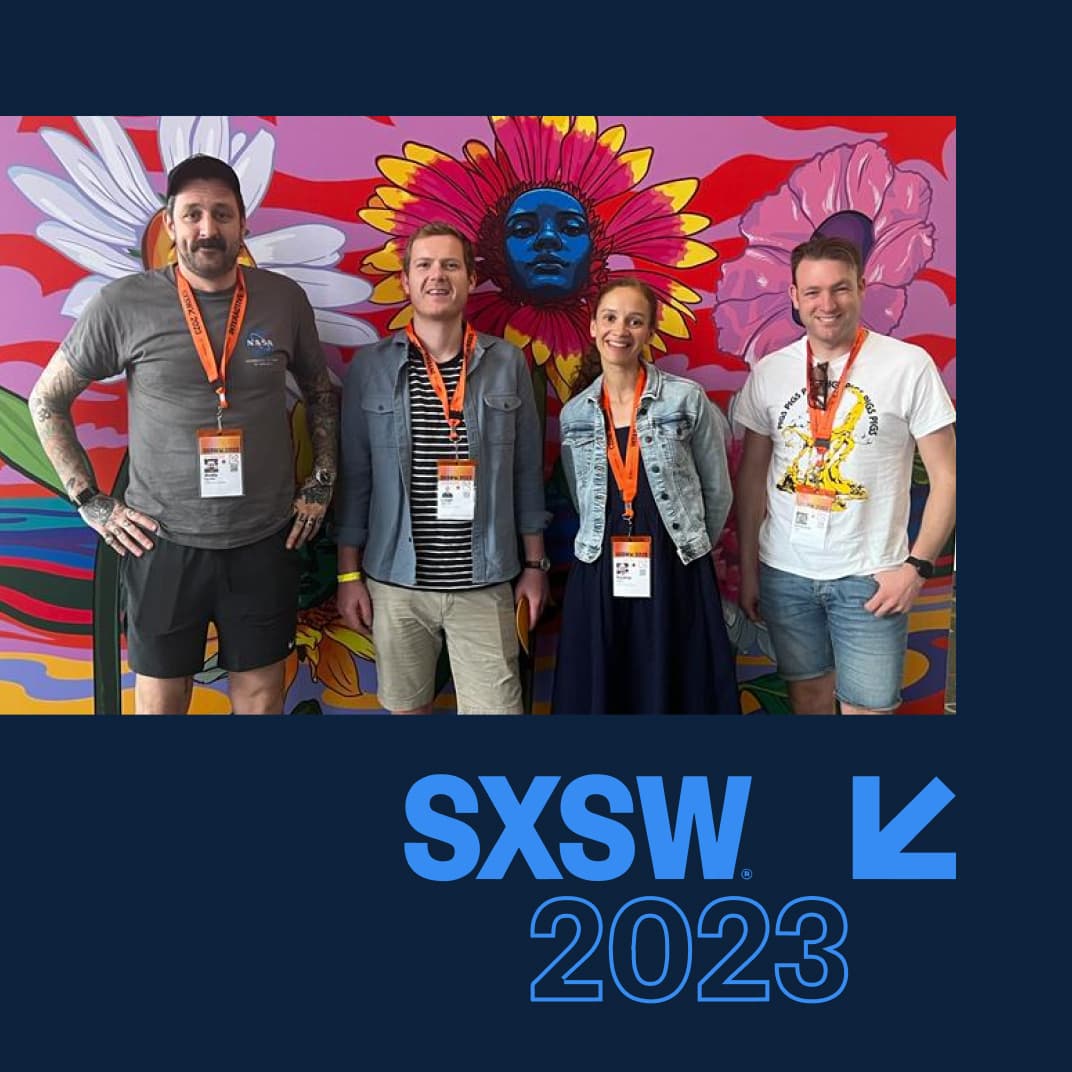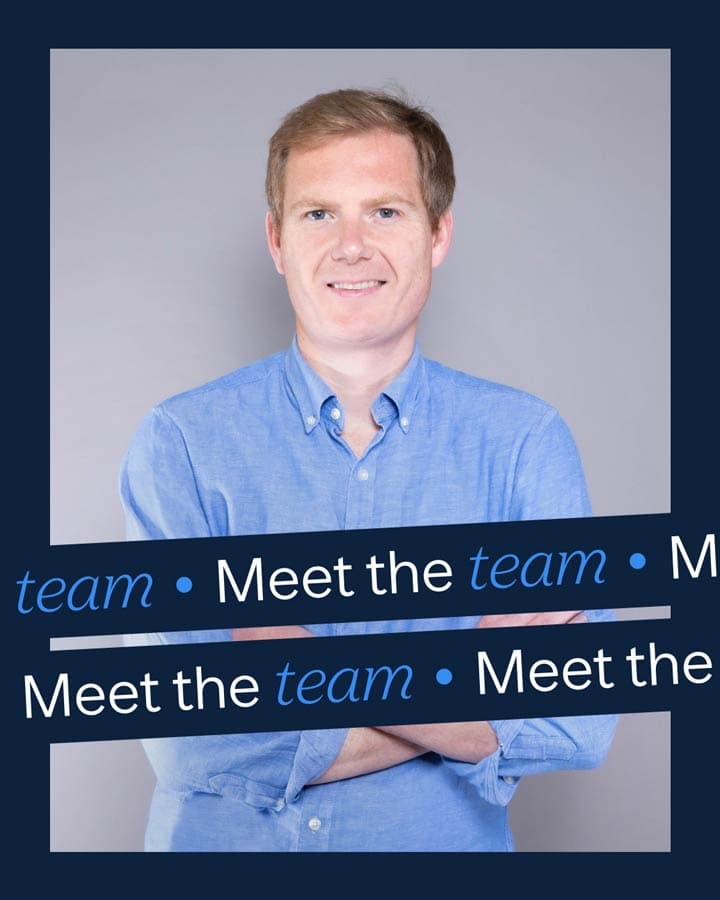
Here at Tangent, we’re in the business of digital products. But the conversation isn’t complete without considering the processes that make them happen, or the people behind it all.
In our new content series, we've been hearing from industry leaders about all things people, process and product in their business. Read on for the next installment of interesting insight straight from digital leaders in conversation with Tangent’s Strategy Partner, Nadine Clarke.
In conversation this week is Stefan Ritter, VP of Product at SAP Learning. SAP Learning is the education branch of global software giant SAP. Serving over 335k customers in 190 countries, SAP is one of the largest enterprise resource planning software vendors in the world - in fact, it’s estimated that 75% of all global business transactions come in contact with an SAP system.
People
Nadine: How has the pandemic and remote working influenced the way you work with your team?
Stefan: Previously it would have been very easy to have a junior member of the team at the beginning of their career sit next to somebody more experienced and shadow them. Since that can’t necessarily happen anymore, I need to ask somebody more senior to book in dedicated time with this person to talk them through. This new way of having to proactively think about how to get people who are new to the team upskilled has been the biggest impact for me.
Nadine: Has it changed the way that you’ve been thinking about your job and what it means for you?
Stefan: SAP has always said remote working is fine, but I still went to the office every day. And in the office, a lot of decisions are made in ad hoc conversations in the hallway or between meetings bumping into someone. The people working from home would then inadvertently miss out on being in that position. So the good thing about everyone working from home means we’ve been forced to formalise decision-making processes in a way that allows everyone in different time zones and ways of working to be informed at every step.
Process
Nadine: So there’s always a very long journey with these kinds of digital products… What's your favourite part of a digital product process from idea to launch?
Stefan: User testing! So much thinking has gone into the design to make everything so clear and obvious... and then you put it in front of users and they just can't find the button or they keep clicking on the wrong thing. It’s always so humbling and such a great reality check. You don't need to do testing with 100 people, either. It's enough to do it with 5-6 as you'll very quickly see patterns of behaviour that make you realise, “Wow okay, I just got it wrong”. That’s the bit I love most, because the users are never wrong - if they can’t find a button, or if they want to start from somewhere else, they are right. If you don't provide that, they'll build a workaround. Or go to a different solution! User testing always brings everything back down to earth.
The other thing that I love is getting feedback, especially after a launch. I have an email folder that's called ‘Happy’ and whenever I get a great email from a team member or customer, I put it in that folder. When things get tough, I can open it and I remember there are some people I made happier and people that really get value from what we've built.
Nadine: What’s been your biggest learning about the process of developing digital products?
Stefan: That's a tough one because there's been so many. With the example of our no code/low code process builder (a tool for people who don't know how to code to build their own business processes and not have to hire a developer to do so), there was a clear business case for it since most SAP solutions get customised by consultants and you need a developer in order to do that. With this specific project, we thought that what we had to do was make lightweight collaboration around business objects easier. To get this into context, imagine there's a supply chain manager and an escalation of their chain has caused the production line to stop. 99% of these problems are solved by the systems automatically, but that 1% of the problems are so complex that the systems don't know what to do.
When this happens, managers used to take a screenshot of the SAP system and they would send it around in emails or calls and say, “Look at this, what do we do?”. Based on this, our thinking was to create a collaboration space where you can work with the data directly as opposed to having to take a screenshot and then losing the connection to what's actually happening.
We started building it, only to learn that that’s actually not that helpful. Instead of collaboration, users want to find out exactly what’s wrong and then involve the right people to get approval to fix the system. There was a desire for problems to be fixed via a step-by-step process instead of, “Hey, let’s chat about it and figure it out”. The chatting about it only happened because they didn't have any other option than taking a screenshot and sending it in an email. The biggest learning in my career so far is that people like structured processes and to know that they're not dropping the ball on things which can happen so easily with freeform collaboration. This only creates so much anxiety and stress for everyone, so if we can provide tools that give people peace of mind in knowing how to get things back up and running, that's much better.
Nadine: Building products takes time. How do you keep up with constant updates to your product, and often the pace of technology moving faster than the business itself?
Stefan: From my experiences, usually it takes 4 years to build a product from scratch. Of course, we can do MVPs to get early traction, but to really have a product that’s scalable, intuitive and that shows you its value within 1 min - that takes years and years. At the beginning of my career, I had a lot of anxiety about constant technology changes and new trends, along with all the new coding frameworks and tech constantly coming out. But in the end, if you focus on what your customers need and stay close to them, that’s the most important thing. Don't be too obsessed with your competition or with how technology is changing because in the end, you have to solve real problems for real people, not just good nice-to-haves.
You still have to stay tapped into what's happening because it’ll impact your roadmap, but it shouldn’t adjust your vision (unless it's something that completely disrupts you in some crazy way). The focus has to be on the customers and solving their problems in a unique and better way than other people are doing it.
Nadine: I quite like this idea of adjusting your roadmap, not the vision. But how do you approach planning when we have no idea what might happen tomorrow/next week? How nimble do you need to be? How reactive should you be?
Stefan: It can be really dangerous if you're too reactive and the next big TechCrunch announcement of startup funding is what’s driving your roadmap, since it means you're not focused on solving the problem. You're distracted. It’s important to remember that the tech in the market and the competition is just one dimension of what influences you. It’s important that it doesn't take over or become more important than what your customers need and the problem you're trying to solve. Also, when a tech environment changes, most of the time it'll increase developer efficiency or productivity, and unless your customers are developers, they won't care if you run on .NET or on C++. They’ll only care if you make their life easier and solve a problem for them.
Nadine: What would you say is a myth about digital transformation?
Stefan: The pandemic has accelerated digital transformation as it's forced people to think how we can be closer to our customers using digital channels or using technology. I think that's the right way to do it: how can we make things better for our customers using tech? Previously, what we were seeing were companies that digitise to be cool. To give you an example, there's a restaurant here in Berlin where to order you have to install an app, sign up, set a password, and then you can finally order your food... that's stupid. It's much easier to just have a waiter come over, tell them what you want, have a personalised interaction with them, and it’s done. I don't want to have to set a password every time I want to order lunch. Digitalization to serve your customers better by making things more seamless, faster, more streamlined - that's the right way to do it. Digitalisation for the sake of digitalisation and looking cool or modern often backfires.
Product
Nadine: With SAP and the new SAP Learning, what do you think are the top challenges of working with a digital product like that?
Stefan: For such a community-based product as SAP Learning, it has to be co-created with our many stakeholders since we’re one component in a giant ecosystem. We don't just have customers... We have learners (internal, external, different experience levels), learning managers (people who find the learning for their team), different buying personas, SAP partners - and that’s just outside of SAP. Inside of SAP, every time we want to launch a new release or product, we have to make sure that sales, service and marketing are all on board, as well as the community and the early adopters. The number one challenge for us is the huge number of stakeholders we have to provide a service for and engage with. Empowering them and creating a platform that works for all of them is key. But in turn, it becomes even more rewarding for us since it has such a big impact on an already very big community.
Nadine: Maintaining and surpassing expectations of so many stakeholders must be challenging when these products are so well established and you’re dealing with thousands if not millions of people.
Stefan: Exactly - the second challenge is that there's too much legacy to deal with which means that when we want to change, we must find an elegant, seamless and painless transition path for everyone.
Nadine: In education and learning, what tech development are you most excited about?
Stefan: What really excites me about this sector in general is the impact we can have on people’s lives. We can help transform people's careers’ trajectories at a scale that was never there before, all over the world. Previously, people would have had to go to university which would have been very expensive. Now, joining the SAP ecosystem can make the difference between being able to support a family of 2 versus a family of 10.
“The tech sector and the SAP ecosystem is also growing at such a rapid rate where there’s now more opportunity than there are people, so we need to really help people jump on this wagon. I get so excited about the impact we have on people's lives."
- Stefan Ritter, SAP
Nadine: What future innovations would you like to see in your field?
Stefan: We need to start to understand and pre-empt the skills that our ecosystem needs. For example, if we were able to have visibility that there’s not enough people who know about machine learning, we can start to push that knowledge into the ecosystem to help it grow and fill that skill gap. That's going to be super exciting especially when you think about careers in the future.
Nadine: As SAP works with digital agencies, why do you choose to work with an agency and how do they help?
Stefan: At SAP, we pride ourselves on creating world-class digital products for our customers. The Tangent team completely understands this and we highly value their outside-in view. You aren't afraid to challenge our status quo and push us to disrupt the market with cutting-edge products. The best bit? You guys do it all so quickly.
Nadine: To end on, what are the top 3 qualities a leader needs in an uncertain future?
Stefan: They need to be metrics driven. You must know how to move the needle and how to define your North Star metric.
You also have to know how to empower your team. A leader is nothing without their team and so it's incredibly important to know how to coach your team and also to understand that it's a two way street. What can you give them? What's the story they will want to tell two years from now?
Finally, you have to create a team culture that allows people to be themselves at work. When you think about it, we spend about 80% of our lives at work - so it’s incredibly important that we have a good time and we can bring our full selves to work. It’s also going to ensure that we create innovative solutions and we look at problems from every available angle.
Next in the hot seat...
Next up on the People. Process. Product. series, Oli will be in conversation with Rajat Dhawan, Group CTO of the global hospitality business Soho House.


















